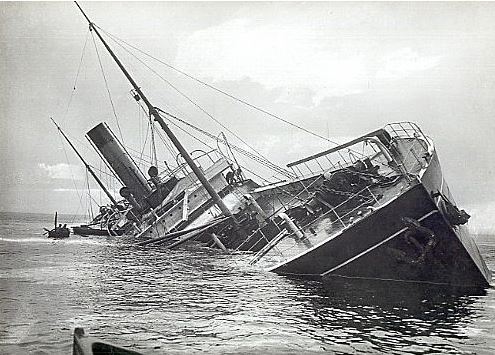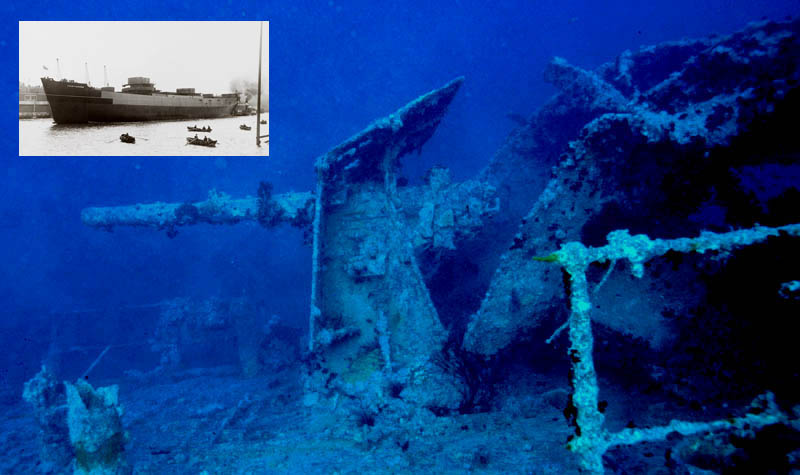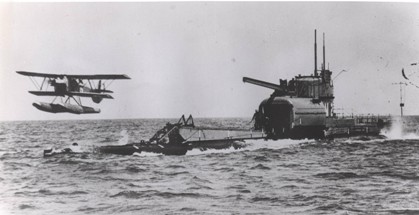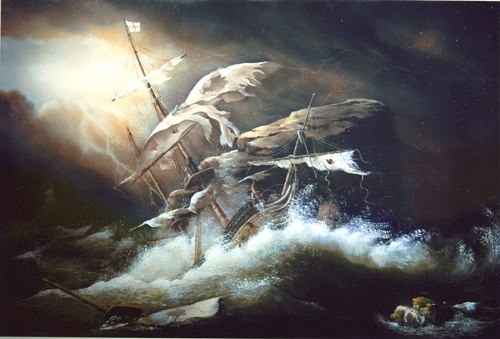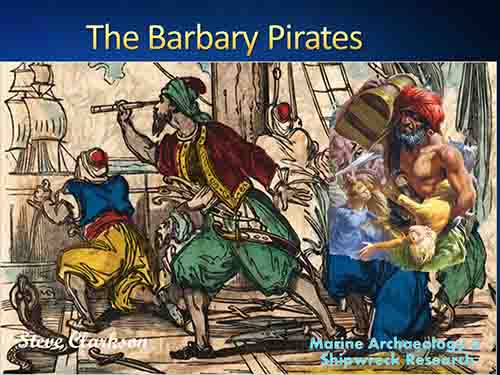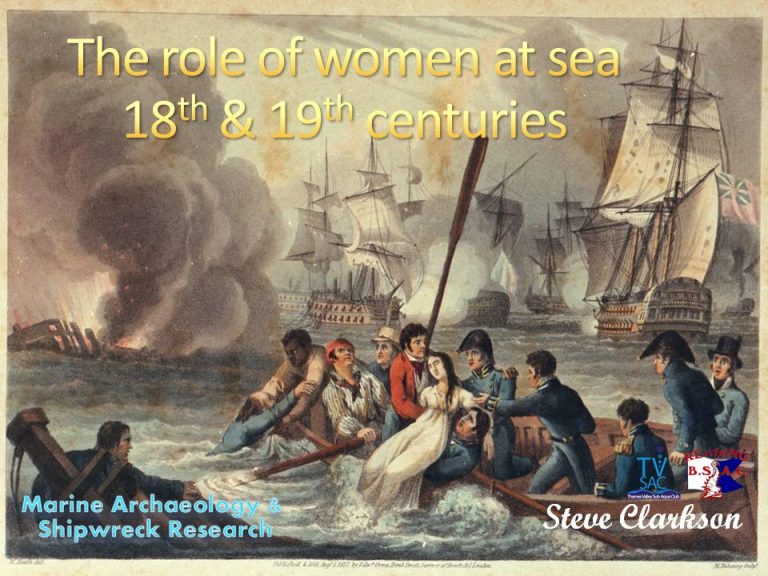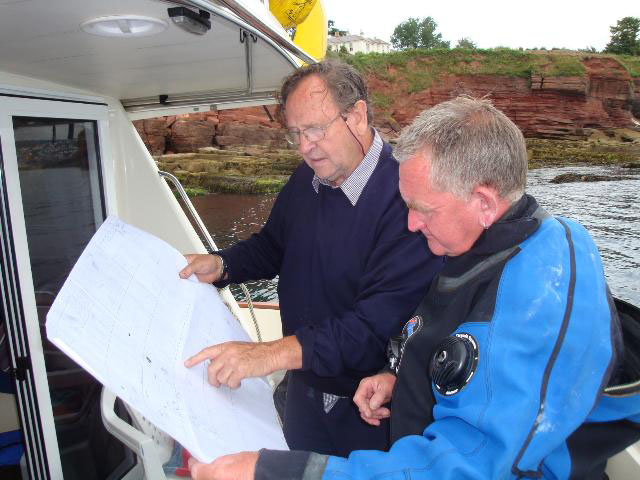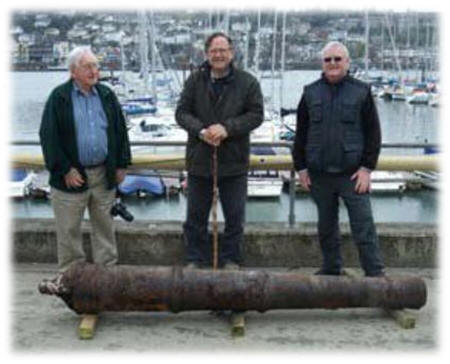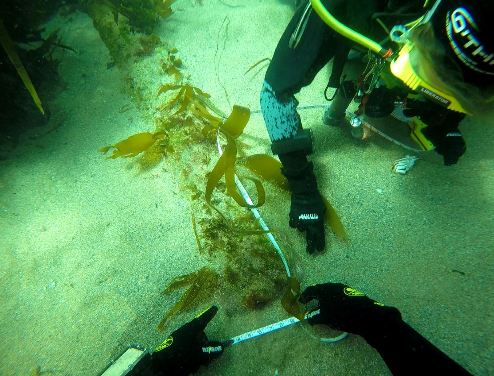Welcome to Steve's & the late Neville's website
Shipwrecks | Archaeology | Stories | Pirates | Treasure
About Us
Steve & the late Neville Oldham are a couple of amateur marine archaeologists documenting some of their diving experience and research
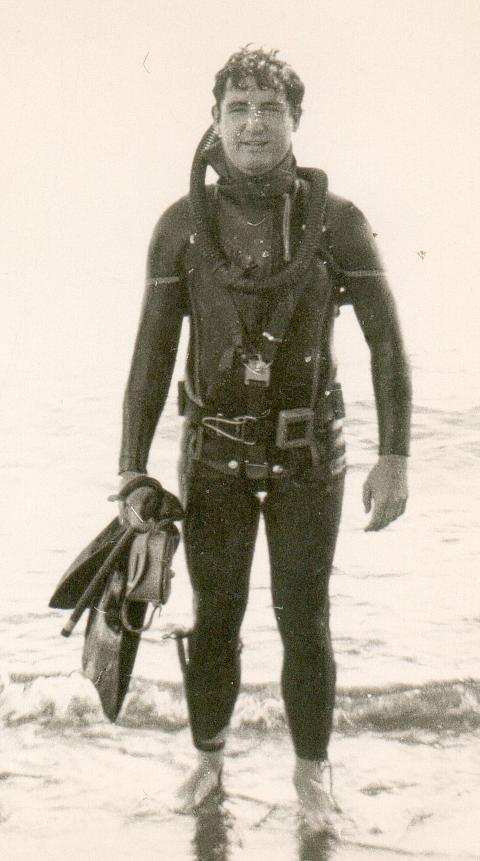
Steve
Steve had a career working as an Electronic Systems design & Software Engineer working on Medical, Nuclear, Avionics including the "Tornado" fighter aircraft. In the latter part of his career he specialised in Project Management consultancy before retiring. Since the age of nineteen he spent his spare time diving on over 500 shipwrecks around the UK and abroad. Since retiring he has taken up the hobby of Marine Archaeology for which he has won several British Sub Aqua Club awards taking him to Buckingam Palace to meet Prince Philip.

The late Neville Oldham 1935 - 2015 RIP
Neville started his career in the Grenadier guards. On leaving the army he started his own building company specialising in restoring older building. In between his building career he ran a dive boat out of South Devon where he gained considerable knowledge of the local shipwrecks. The was a “Fellow” of the Nautical Archaeological Society and appeared in various BBC programs including “White Slaves Pirate Gold”, “Digging for Britain”, and “Ancient Britain”. His archaeological work has also gained him various awards which took him to Buckingham Palace.
Latest news from around the world (Last updated February 2021)
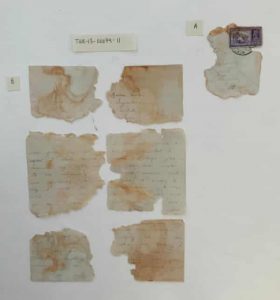
'Look after yourself my darling': poignant letters salvaged from 1941 shipwreck
Archivists have painstakingly reconstructed the wartime missives recovered from the SS Gairsoppa, sunk by a U-boat off the Irish coast The fragments of a 1941 love letter to a woman named Iris, found nearly three miles under the ocean in a shipwreck, have been painstakingly pieced together by experts, 80 years after it was posted. “Look after yourself my darling, not only for your own sake …….. for mine also,” wrote the unknown serviceman stationed in the Waziristan region, now part of Pakistan. “Imagine that I have my lips tight against yours with my arms around you tight … let us hope that this bloody war will soon be over.” The letter is one of 717 that were never delivered by the cargo ship, the SS Gairsoppa, which was destined for the US. The ship was torpedoed off the coast of Ireland by a German U-boat on 16 February 1941. Of the 86 crew on board, only one survived.
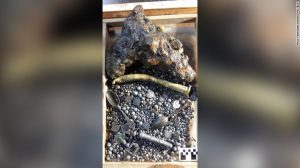
6 skeletons found at a pirate shipwreck site could point to its fabled captain
(CNN)For the pirates of the 18th century, treasure meant gold. But for the investigators at Whydah Pirate Museum in Cape Cod, Massachusetts, treasure could simply mean big rocks -- as long as there are skeletons tucked inside. This week, the museum announced that its investigative team had found several concretions off the Massachusetts coast, containing six skeletons. Some of the remains may belong to the captain of the world's only verified pirate shipwreck, the Whydah, which sank in 1717. The recovered concretions -- compacted masses of matter -- are under examination by Barry Clifford, an underwater explorer, and his team of archaeologists, according to the release, obtained by CNN affiliate WBZ and shared with CNN. The legend of Whydah's captain, pirate "Black Sam" Bellamy is a love story, and a tragic one. As legend has it, Bellamy was sailing back to his lover when a storm wiped out his ship, leaving only two survivors, according to the museum's website.
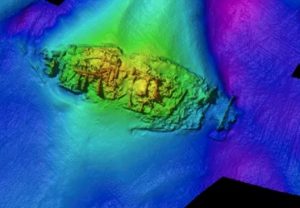
‘Mystery shipwrecks granted legal protection
Two mystery well-preserved shipwrecks have been granted protection by the Department for Digital, Culture, Media and Sport on the advice of Historic England. The mystery shipwreck GAD23, also known as the 'Bowsprit' wreck, is a rare survival of a once common wooden cargo vessel in the mid-to-late 19th century which sank off the Goodwin Sands in Kent. The ship was transporting coal at a time when England was the world’s leading producer and exporter of coal to Europe. The second mystery wreck WA08 discovered in the Thames Estuary in Essex. These shipwrecks serve to teach us about the legacy of Britain's industrial past. I am pleased that these new protections will enable us to preserve them as we continue to learn more about the role they have played in our nation's history. Nigel Huddleston, Heritage Minister
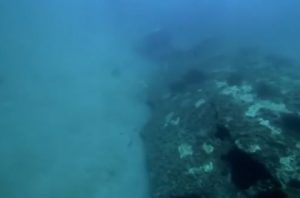
Archaeology breakthrough: £150million World War 1 shipwreck treasure discovery
ARCHAEOLOGISTS were thrilled when the remains of two World War 1 ships were found beneath the surface of the North Atlantic Ocean, jam-packed with treasure worth millions. The SS Mantola was a passenger steamer of the British-India Steam Navigation Company. Launched more than 100 years ago by the Barclay Curle Company, the ship sailed for less than a year before it was sunk by a German U-boat while carrying a large quantity of silver bullion. The British Ministry of War Transport paid a War Risk Insurance Claim for £110,000 for the silver that was on board when the vessel hit the seabed.
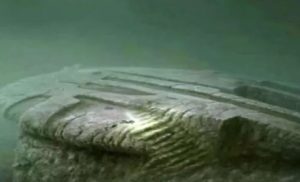
Archaeology breakthrough: Shipwreck hunters stunned after discovering 'spaceship'
ARCHAEOLOGISTS found a stunning "spaceship-like" looking object when searching for shipwrecks in the Baltic Sea. The Baltic Sea has become a hotspot for shipwreck discoveries in recent years, with finds of vessels from centuries gone by shedding new light on the world's most famous eras. Vello Mass, a researcher who pinpointed many of these ships, once said the boats languished at the bottom of the sea long before some of the sea's most famous finds. He said: "There are hundreds of Viking ships out there, hundreds of old trading ships, hundreds of warships. "The Baltic's an archaeological paradise." Sweden has become synonymous with such finds, but shipwreck hunters found something very different near the Scandinavian country in 2012.
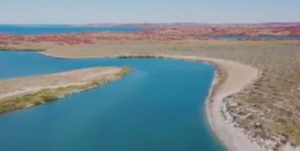
‘Archaeologist’s paradise!’ Divers uncovered rare 4,000-year-old Greek underwater city
ARCHAEOLOGISTS uncovered a massive Bronze Age city submerged below the surface of the Aegean Sea, described as a "paradise". The find was made on the Peloponnese Peninsula, south of Athens, in an area close to Kiladha Bay, which is known to be of historical importance. It is protected by the Greek government, who strictly regulates diving to prevent the looting of archaeological artefacts. But, a group of researchers from the University of Geneva made a stunning discovery while training at the nearby Lambayanna Beach.
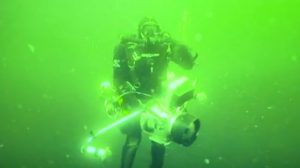
Underwater Archaeologists Discover Huge Shipwreck Dating Back Hundreds of Years and Destroyed WWII Bridge
Underwater archaeologists have discovered a huge, centuries-old shipwreck and a destroyed World War II bridge in a river in Poland. The sunken vessel, which measures around 20 feet wide and 120 feet long, was discovered north of the Polish capital Warsaw at the bottom of the Vistula River, the largest in the country, reports Science in Poland (SIP), a website run by the country's Ministry of Science and Higher Education and Polish Press Agency (PAP). "This is most likely a large transport vessel that was used from the 14th to the 18th century," Artur Brzóska, head of the research project from the University of Warsaw, told SIP.
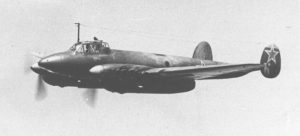
Legendary Soviet bomber wreckage removed from bottom of Black Sea
The wreckage of a Soviet plane, which disappeared after taking off for bombardment against the Nazis during the Second World War, was removed from the Black Sea 75 years later. During the Second World War, the PE-2 type Soviet Union-made fighter jet, which took off from the southern region of Russia to bomb Nazi Germany, had been disappeared. The Soviet fighter jet that disappeared in 1945 had not been found after that date. Towards the end of last year, an aircraft wreck was detected during seabed investigations carried out on the Black Sea coast of Russia.
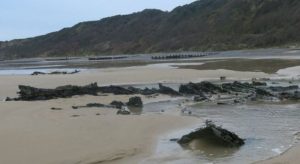
Cromer low tides reveal 1917 shipwreck of SS Fernebo
The rusting remains of a World War One shipwreck have been revealed by low tides on a north Norfolk beach. The Swedish vessel SS Fernebo was broken in half by an explosion on 9 January 1917 near Cromer pier. One man was killed by the blast, possibly caused by a mine, but the 17 other sailors were rescued by famed lifeboatman Henry Blogg and his crew. "There are many people in the town who still don't know it's there," said Cromer museum assistant Alan Tutt. "It's only seen at very low tides, and it's about half a mile east towards Overstrand, so it's quite a rare sight. "I find it an evocative place because of the story behind it," he added.
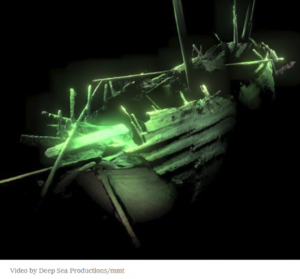
A Shipwreck, 500 Years Old
Its condition is pristine, but its identity is a mystery. For now, maritime archaeologists call it Okänt Skepp, Swedish for “unknown ship.” For 500 years, the Baltic Sea held in its depths a tall ship of the Renaissance era. Around the time the ship sank, Columbus was discovering the New World. His fleet vanished long ago. But the Renaissance vessel suddenly reappeared recently, remarkably well preserved in the icy Baltic waters.

RV Petrel Team Discovers Wreck of USS Wasp
A 3D scan of the shipwreck created during 2016 and 2018 fieldwork, shows a highly detailed view of the archaeological remains. (Image: © Image by John McCarthy) In the depths of the cold North Atlantic near the coast of Iceland lies the wreck of a Dutch ship that sank 360 years ago while pretending to be Danish. At the time, the Netherlands (and all European nations) were barred from trading with Iceland by the country's ruler, the King of Denmark. But Dutch smugglers skirted the ban by sailing to Icelandic ports in ships that flew a false Danish flag.
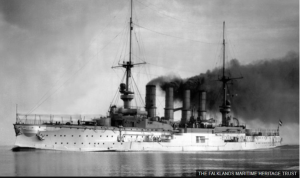
German WWI wreck Scharnhorst discovered
The wreck of a World War One German armoured cruiser has been located off the Falkland Islands, where it was sunk by the British navy 105 years ago. SMS Scharnhorst was the flagship of German Vice-Admiral Maximilian Graf von Spee's East Asia Squadron. It was sunk on 8 December 1914 with more than 800 men on board, including Vice-Adm von Spee himself. The leader of the search for the wreckage said the moment of discovery was "extraordinary". 'Poignant moment' "We are often chasing shadows on the seabed
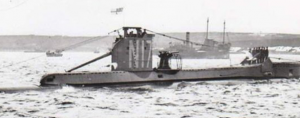
Submarine found off Malta
A marine archaeology survey team from the University of Malta, working in co-operation with the Superintendence of Cultural Heritage and an international project team, has located the wreck of the British WW2 submarine HMS Urge (N17) off the coast of Malta. Professor Timmy Gambin, from the University’s Department of Classics & Archaeology, led the survey team, whose discovery finally resolves the question of how one of Britain's most successful WW2 submarines was lost. The search team consisted of maritime archaeology staff and students from the University of Malta, robotics students from Harvey Mudd College in the USA, and a number of sub-contracted vessels. HMS Urge earned her renown in the second world war due to her successful attacks on many enemy vessels and special operations work with the British commandos and Secret Intelligence Service. Her disappearance in 1942 has long been a mystery.
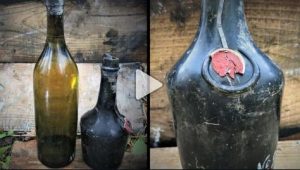
Treasure hunters salvaged liquor from a 102-year-old WWI shipwreck,
(CNN)A group of underwater treasure hunters has salvaged hundreds of bottles of rare cognac and liqueur from a ship that was sunk by a German U-boat during World War I. Divers and unmanned underwater vehicles from Ocean X Team and iXplorer worked around the clock for a week last month to haul up case after case of booze from the Swedish steamer SS Kyros, which has been sitting in about 250 feet of water (77 meters) in the Baltic Sea. They recovered 600 bottles of De Haartman & Co. cognac and 300 bottles of Benedictine liqueur -- a brand now owned by Bacardi, Peter Lindberg with the Ocean X Team told CNN. "We don't know yet if it is drinkable. We get a fraction of smell from the Benedictine bottles and it smells sweet and from herbs," Lindberg told CNN. "We can't get any sense of smell from the cognac bottles, but that might just be in order since it should not smell through a cork." An Arctic shipwreck frozen in time is revealing new details of a tragic 1845 expedition

U-boat from ‘Hitler’s lost fleet’ found
The heavily encrusted wreck of a German U-boat, a part of ‘Hilter’s lost fleet’ that sank in the Black Sea during World War II, has been discovered and captured on video as part of a new documentary. The U-23 submarine was lying 40 meters beneath the water surface, some 3.7 km (two nautical miles) off the cost of Agva, a popular resort destination 97 km (60 miles) from Istanbul. The stunning find was made during the filming of a documentary produced by the Turkish public broadcaster and the country’s navy.
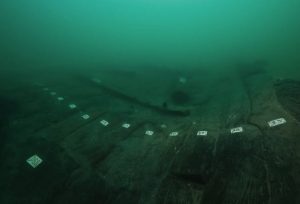
Mysterious Ships
Around 450 B.C., the Greek writer Herodotus traveled to Egypt. His later account of the trip, included in his famous work The Histories, focused on a distinctive river barge known as a “baris,” which he said the Egyptians used to ferry goods up and down the Nile River. Herodotus described the vessel as having a single rudder that passed through a hole in the keel, a mast of acacia wood and papyrus sails. But for centuries, scholars had been unable to find evidence that such a vessel existed—until now. A team of researchers investigating the sunken ruins of the ancient port city of Thonis-Heracleion, located off the coast of Alexandria, Egypt, have discovered more than 70 shipwrecks. One of those wrecks, archaeologists say, is a well-preserved vessel that almost exactly matches Herodotus’ description of the baris.
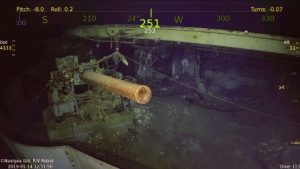
RV Petrel Team Discovers Wreck of USS Wasp
The expedition crew aboard the late Paul G. Allen’s research vessel RV Petrel discovered wreckage from USS Wasp (CV 7), which was sunk in 1942. Wasp, found Jan. 14, was sunk September 15, 1942, by four Japanese torpedoes from the Japanese submarine I-19 while escorting transports carrying the Seventh Marine Regiment to Guadalcanal as reinforcements. The sunken aircraft carrier was found in the Coral Sea, 4,200 meters below the surface. “Paul Allen’s passion for U.S. history lives on through these missions. He was dedicated to honoring the brave men who fought for our country,” said Robert Kraft, director of subsea operations for Vulcan Inc. “Paired with the discovery of USS Hornet announced in February, we’re excited to start out the year with these momentous discoveries.”
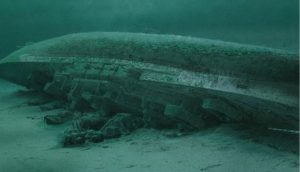
Reward for stolen Royal Oak wreck data laptop
Divers and academics have offered a £1,500 reward for the safe return of a laptop containing precious survey data from a sunken battleship. The computer and back-up disks were taken from a flat at Stromness in Orkney at the weekend. They contain months of work being used to create three-dimensional images of HMS Royal Oak in Scapa Flow. The project was for the 80th anniversary commemorations of the ship's sinking by a German U-boat. More than 800 men and boy sailors died when the ship was torpedoed in October 1939 by U47, which had slipped through the defences of the Royal Navy's supposedly secure anchorage.
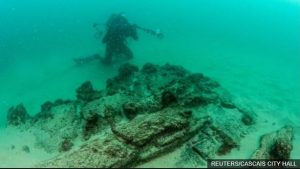
Portuguese 400 year old shipwreck found off Cascais
Spices, ceramics and cannons engraved with Portugal's coat of arms all lie around the wreck, found near Cascais, close to the capital Lisbon. The team believe the ship was returning from India when it sank sometime between 1575 and 1625. This was at the height of Portugal's spice trade with Asia. Who owns treasure hidden under the sea? Hunting the shipwrecks of the slave trade Lying 12m (40ft) beneath the surface, project director Jorge Freire told Reuters news agency the wreck was very well-preserved. "From a heritage perspective, this is the discovery of the decade," he said, calling it "the most important find of all time" for the country.
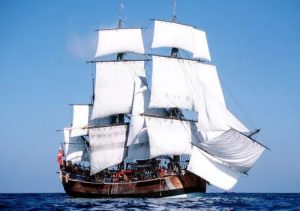
Wreck of Captain Cook's HMS Endeavour 'discovered' off US coast
The possible discovery of HMS Endeavour off the east coast of the US has been hailed as a “hugely significant moment” in Australian history, but researchers have warned they are yet to “definitively” confirm whether the wreck has been located. On Wednesday Fairfax Media reported archaeologists from the Rhode Island Marine Archaeology Project, or Rimap, had pinpointed the final resting place of the famous vessel in which Captain James Cook reached Australia in 1770. The ship was later used by the Royal Navy in the American war of independence and was eventually scuttled with a dozen other vessels off Newport, Rhode Island in 1778.
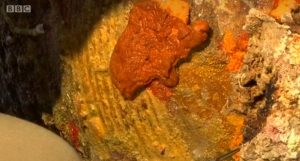
Ancient Greek shipwreck treasure trove found
Dozens of shipwrecks in the Aegean reveal a new story about ancient seafarers. Most of the wrecks date back to the Greek, Roman and Byzantine eras.
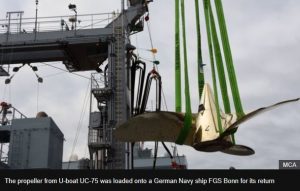
WW1 U-boat propeller 'stolen from wreck' returned to Germany
A stolen propeller from a World War One U-boat is being returned to Germany after being recovered in Wales. The submarine UC-75 was responsible for sinking 56 merchant ships and two warships before it went down in the North Sea in 1918. But propellers from the vessel were found in a storage unit in Bangor, Gwynedd, a year ago. It is thought the items were illegally taken from the U-boat wreck by a diver off the east Yorkshire coast. One of the propellers has been handed back to the German Navy in Plymouth, while the other will go on display at the Royal Navy Museum in Portsmouth. "These propellers tell a story of bitter conflict and human loss, but also of bravery, selflessness and love," said Vice Admiral Sir Alan Massey, the chief executive of the Maritime and Coastguard Agency.
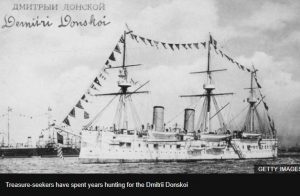
Shipwreck claim: Police probe Shinil Group over 'Russian treasure find'
Police have raided the offices of a South Korean company which claims to have found a treasure-laden shipwreck. Shinil Group said in July that it had found the Russian cruiser Dmitrii Donskoi, which sank in 1905 and was rumoured to hold gold worth billions of dollars. Speculation has since spread that the alleged find might have been a scam to trick investors. Shinil chief Choi Yong-seok has been banned from leaving South Korea. Treasure hunters have searched for the Dmitrii Donskoi for decades, and the announcement of its discovery in July made headlines around the globe. Shinil released submarine footage showing what it said were parts of the wreck near the island of Ulleungdo, between South Korea and Japan.
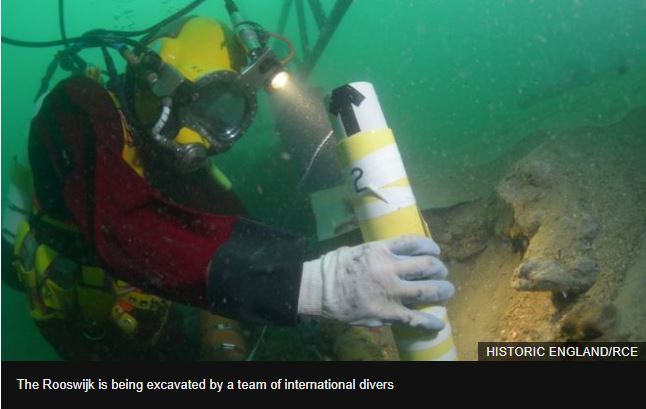
New evidence reveals Goodwin Sands shipwreck's secrets
Crew members of a ship which sank off the Kent coast more than 275 years ago have been identified. Researchers used archive documents to name 19 of the 237 shipmen who were on board the Dutch ship the Rooswijk. Among them were a senior surgeon, a 19-year-old on his first voyage and a sailor who had previously survived a shipwreck. The vessel, which was carrying coins and silver ingots, sank on Goodwin Sands in January 1740. More than a thousand vessels are known to have been wrecked on the notorious sandbanks, dubbed "the great ship swallower".
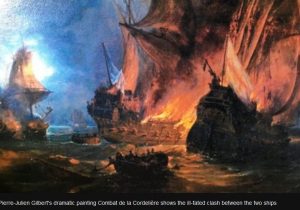
Mssion to find the wrecks of two warships, one French and one English, that sank 500 years ago off the Brittany port of Brest.
Instead of Cousteau's old minesweeper Calypso, it is the French culture ministry's surveillance ship André Malraux and its doughty crew of scientists and divers. Today's adventure: to locate, excavate and eventually raise the wrecks of the Cordelière and the Regent - two behemoths of the Tudor seas that sank together in the Battle of Saint-Mathieu in 1512. And filling the Cousteau role is Michel L'Hour, marine archaeologist extraordinaire and veteran of a thousand missions to explore France's underwater heritage. "I have been obsessed with finding these ships for 40 years," he says, ruddy-faced and bearded like any proper sea-dog.
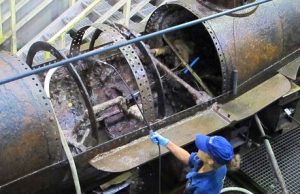
Hidden Compartments in This Wrecked Confederate Submarine Could Solve a 150-Year-Old Mystery
The Confederate submarine H.L. Hunley was a 40-foot-long (12 meter) sausage of bulletproof iron built in Mobile, Alabama, and propelled through the water by seven daring men cranking a single, giant screw. It was, it's fair to say, not the safest place in which to spend the Civil War. During the Hunley's brief career, between July 1863 and February 1864, the primitive sub sank three times, which resulted in the deaths of 21 of its own crewmen. Nevertheless, on Feb. 17, 1864, the Hunley made history by ramming a live torpedo into the hull of the Union warship USS Housatonic, becoming the first submarine in history to successfully sink an enemy vessel.
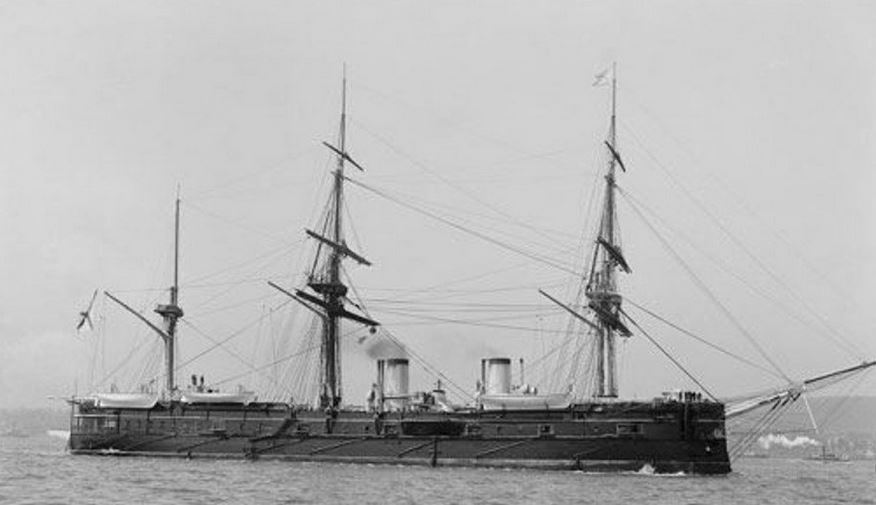
Race for Russian warship’s ‘5,500 boxes of gold’
The badly damaged Russian Imperial Navy cruiser was located by manned submersibles at a depth of 434 metres about 1.3km off Ulleungdo on Sunday morning. The Seoul-based maritime salvage company Shinil Group has been searching for the precise site of the wreck for several years and put together a team of experts from South Korea, China, Britain and Canada for this year’s effort.
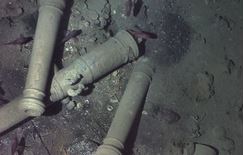
Archaeologists Find 'Holy Grail of Shipwrecks' Carrying Stash Worth Up to $17 Billion
In 1708, the San José— a Spanish galleon ship carrying a stash of gold, silver and emeralds — sank during a fierce battle against the British in the Caribbean Sea. Now, after sitting at the bottom of the ocean for 310 years, the San José's shipwreck has finally been officially identified, thanks to an analysis of the distinctive bronze cannons that sank with the ship.
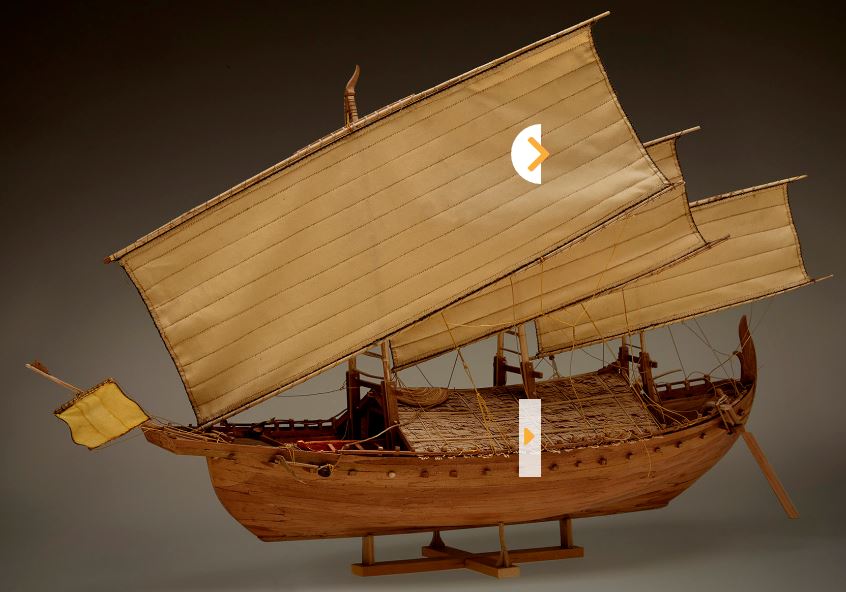
Amazing Artifacts from a Java Sea Shipwreck
In the 1980s, fisherman in the Java Sea discovered the remnants of a shipwreck that would have looked much like this model in its glory days. The ship, a merchant vessel thought to have gone down in the late 1200s, more likely sank in the second half of the 1100s, according to new research.
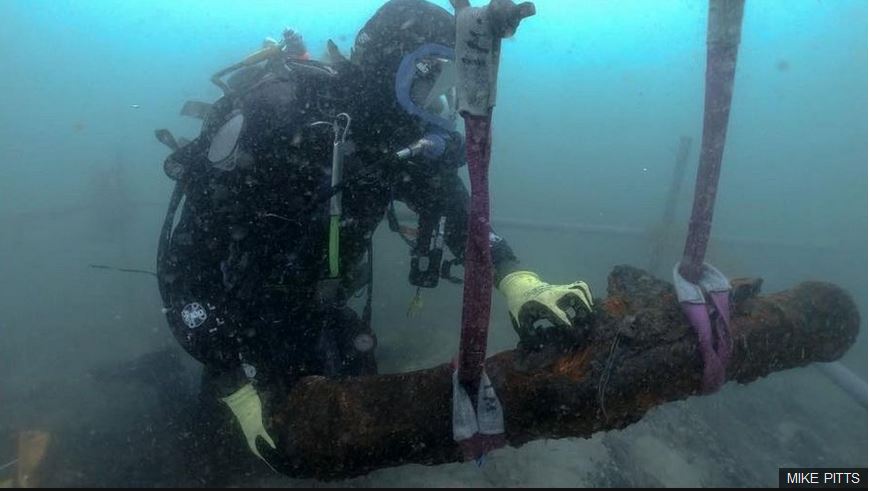
HMS Invincible shipwreck's latest artefacts revealed
More artefacts from a warship that was wrecked in the Solent in 1758 have been brought to the surface. HMS Invincible - built by the French in 1744 and captured by the British in 1747 - is believed to be one of the most significant warships ever built. A second excavation is being carried out on the wreck site near Portsmouth. Among the finds are a gunpowder barrel, swivel guns, woodworking tools and a sandglass used in calculating the ship's speed.
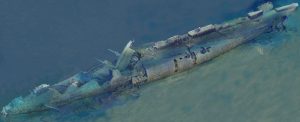
Photographic processing unlocks more secrets from HMAS AE1 shipwreck
Australia’s first submarine, lost at sea for over 100 years, continues to reveal its secret history through advanced 3D processing techniques of underwater still photography. Researchers are digitally reconstructing the sunken HMAS AE1 using about 8500 still images captured of the submarine during an archaeological surveying expedition earlier this year, with the goal of gaining a better understanding of the submarine’s fate.
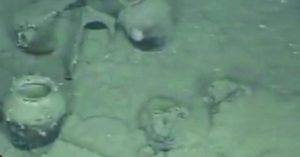
Shipwrecks: Who owns the treasure hidden under the sea?
New details have emerged about the San Jose, a Spanish galleon sunk by British ships 300 years ago. The vessel was said to be transporting gold, silver and precious gems collected in the South American colonies to be shipped to Spain's King Philip V to help finance the war of Spanish succession. Colombia said it first discovered the wreck, located somewhere off the coast of Cartagena, in 2015.
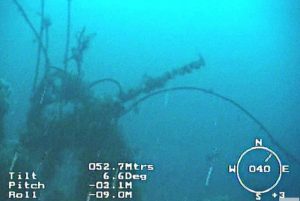
Royal Navy wreck discovered 74 years after it sank in heavy storm
The wreck of a Second World War Royal Navy support vessel has been discovered 74 years after it sank in a heavy storm amid a U-boat attack on its convoy. The Empire Wold was attempting a rescue after a tanker and another ship were torpedoed and sunk off Iceland in 1944 when she disappeared. Her 16 crew all perished in what some believed was the third U-boat attack on the group of ships.
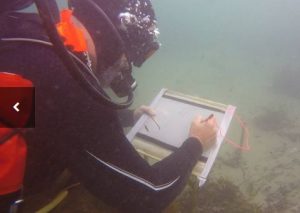
South Australia’s oldest shipwreck found off Encounter Bay
Encounter Bay is now home to the state’s oldest shipwreck after maritime heritage experts made the discovery in Rosetta Harbor this month. Minister for Environment and Water David Speirs said experts had been looking for the wreck of the barque South Australian for many years. “The ship was driven ashore in a storm on 8 December 1837 while anchored in Rosetta Harbor at Encounter Bay, but its exact location remained a mystery until this year,” he said.
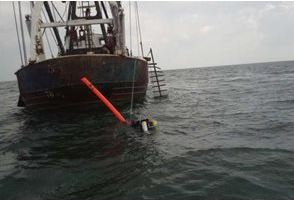
Shipwreck divers jailed for failing to disclose artefacts
Shipwreck divers who looted a Royal Navy vessel at the bottom of the English Channel have been jailed for failing to disclose the items they took. HMS Hermes was a protected cruiser built in the late 19th century and converted into an aircraft ferry and depot ship ready for the start of the First World War.
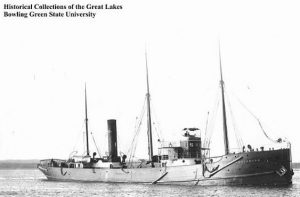
Search continues for undiscovered Great Lakes shipwrecks
The wreck of a Second World War Royal Navy support vessel has been discovered 74 years after it sank in a heavy storm amid a U-boat attack on its convoy. The Empire Wold was attempting a rescue after a tanker and another ship were torpedoed and sunk off Iceland in 1944 when she disappeared. Her 16 crew all perished in what some believed was the third U-boat attack on the group of ships.
